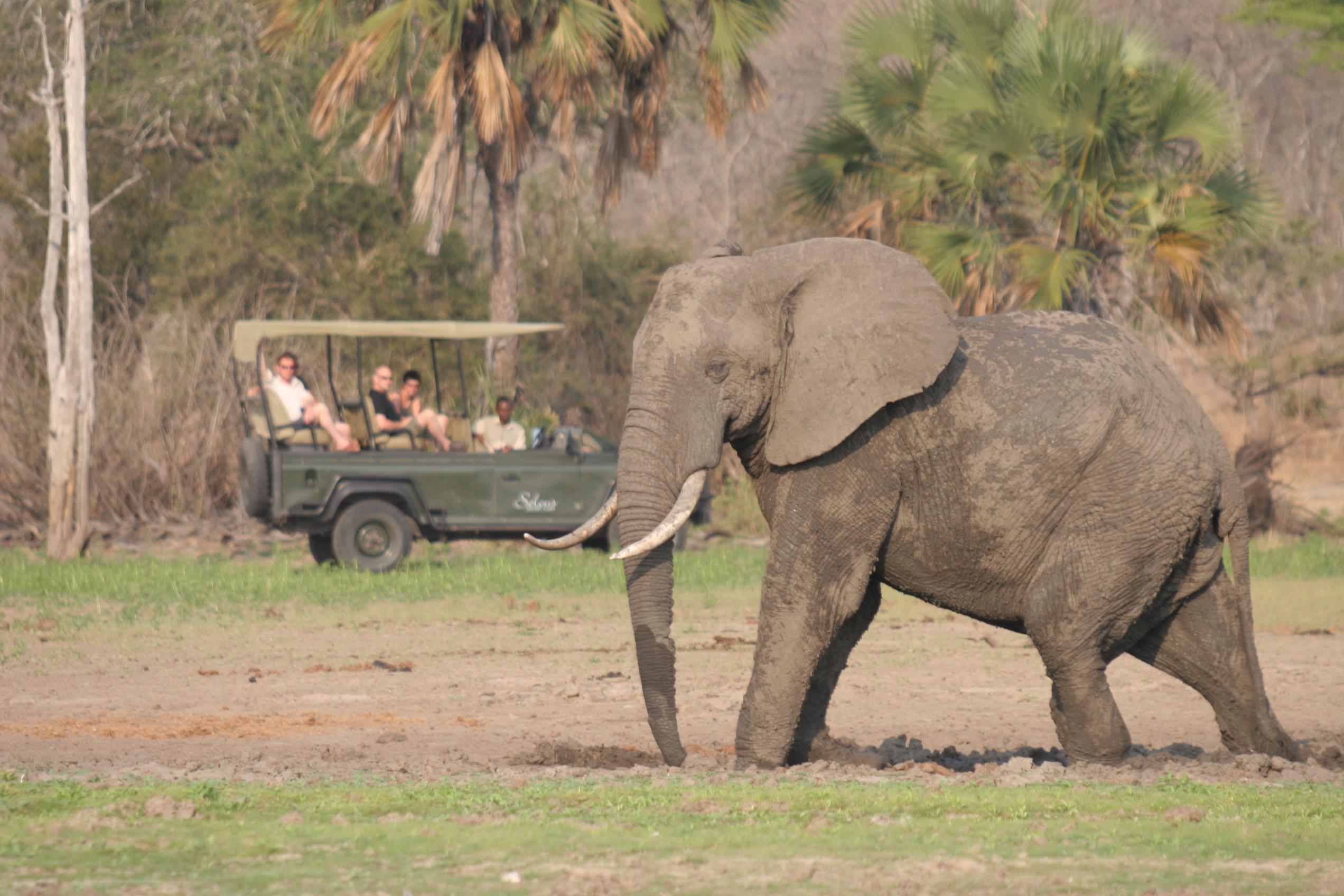 According to the World Wildlife Fund (WWF) the number of elephants living in Selous national park found in Tanzania might completely be depleted in the next five years if poaching as well as mining is not immediately controlled.
According to the World Wildlife Fund (WWF) the number of elephants living in Selous national park found in Tanzania might completely be depleted in the next five years if poaching as well as mining is not immediately controlled.
The large Selous national park, listed among the Heritage sites in the world is found in the southern part Tanzania, previously it a mighty strong hold of elephants and one of the best places to see them while on safari in Tanzania. However, sad to say today is that since the 1970s, it’s estimated that about 2,000 elephants are killed each year and today the elephant population has reached critical numbers according to the last census conducted with approximately 15,000 only remaining in this reserve.
In their latest study, WWF state that the elephant numbers have reached a historic low and this calls for immediate measures to protect the few surviving ones as well as restore their population to sustainable numbers. However they warned that unless something is done about this, come 2022, elephants could completely disappear from Selous Wildlife Reserve by 2022.
Mining in Selous National Park
This park which is also home to various other animals besides the elephants, among which are: buffaloes, lions, crocodiles, wild dogs, leopards and more than 403 bird species is additionally threatened by mining which unfortunately is conducted on large scale. Close to 75% of the land area of Selous Reserve is covered with oil plus gas concession, fifty four mining concessions have actually been awarded within this reserve.
The WWF points out that the Mining conducted in this park might result into water pollution as well as environmental degradation. They added that extractive industries lead into destruction of the habitat of the wild animals especially in the areas surrounding the exploration sites. Back in 2012, the government modified the boundary of Selous World Heritage site to allow the building of a large-scale uranium mine within the southern part of this reserve. When this becomes fully operational, this mine will produce approximately 60 million tons of toxic radioactive waste.
Population History of Elephants in Selous Reserve
Just 40 years back, this Selous wildlife reserve had almost 110,000 elephants. However two eras of severe poaching have lowered this number nearly by 90%. Unfortunately, as a result of the first poaching era, by 2007 the elephant population within the broader ecosystem that stretches past the boundaries of the reserve had dropped to 70,406. The other (second) poaching era occurred from 2010 to 2013 with a record of on average of 6 elephants being killed each day by heartless poachers.
Effects of Elephants Loss to Tanzania
In accordance with the World Wildlife Fund (WWF), loss of elephants and other wildlife species will certainly have an extensive negative financial impact on the economy of Tanzania. Currently this Selous wildlife reserve generates about 6 millions dollars in yearly revenues, and these are shares among the Tanzanian government, the reserve as well as over 1.2 million local residents staying within the adjacent areas.
The potential of Selous reserve to generate income depends on its peaceful natural eco-system as well as the large number of wildlife. So degradation of the wildlife habitat as well as elephant loss will definitely reduce the glory of Selous and thus become less appealing to tourists as well as interfere with the natural resources including clean water that the park offers to the nearby communities.
If not controlled, detrimental industrial activities as well as wildlife poaching will significantly reduce Selous’ value, and make it very challenging for the reserve to offer adequate security for its wildlife.
Advice to the Tanzanian Government
In conclusion of their study, the writers advised the Tanzania government to carry out a comprehensive social-economic assessment so as to evaluate the direct and indirect as well as non-use values of this reserve to verify the effect of the intended mining activities within Selous Wildlife Reserve. However the people in authority should equally value at the needs of today’s generation and the future to come with great considerations to activities that support the long-term development and sustainability of the Tanzania in form of permanent jobs especially if this tourism industry is well managed rather than the short-term profit generating things including minerals, oil and gas.
We as wildlife lovers, we hope that the Tanzanian government will make the right decision and tourists are encouraged to visit Selous reserve in-order to add value to the reserve such that it can guide the government in decision making.
For updates regarding Tanzania tourism and safaris, visit gorillas-safaris.com


UGANDA SAFARI PACKAGES :